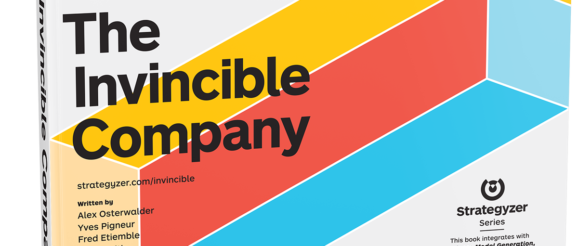What is the Right Organizational Design to Build a Successful Innovation Pipeline?

In our previous blog, we emphasized the importance of having a Chief Entrepreneur and Ambassador as the top executives dedicated to create and manage new growth in the company. However, having these roles alone does not necessarily mean you will have an effective innovation pipeline. They could end up becoming just figureheads for innovation. This might look good on your organizational chart, but it will not produce real results. An effective innovation pipeline means building a repeatable process to innovate continuously. And this requires an organizational design dedicated to facilitating this pipeline from end to end.
In this article, we walk you through the kind of organizational design needed to successfully manage and shape a continuous innovation pipeline. The importance of having dedicated roles, what these roles entail, and how they can contribute so entrepreneurs can have the best chance of success.
The Organizational Design
The first element in building an innovation pipeline is to find and nurture a pool of dedicated Entrepreneurs, who can form teams that are responsible for specific innovation projects. This role is a lot stronger than your regular product or project manager. These are real entrepreneurs with clear incentives and a stake in the projects they are working on. They will report directly to the Chief Entrepreneur, with a clear goal of shaping the future of the company. All companies we work with have a great talent pool to recruit potential entrepreneurs – you just need to give them the space to explore and gain experience. You can complement internal entrepreneurs with seasoned external ones who have a track record.
The next important element of organizational design focuses on having someone who looks at the range of new opportunities and business models that align with the company’s overall strategy. This is the job of the Chief Portfolio Manager. The person in this role gives corporate entrepreneurs guidance so they can know what’s in, what’s out, and where to play. This ensures entrepreneurs are working on ideas that align with the company’s overall strategy and prevents them from becoming ‘homeless’ projects further down the line.
Another key element is funding. Where the Chief Finance Officer typically allocates budgets to the existing business, the Chief Venture Capitalist allocates money to the discovery of future businesses. The Chief VC manages small financing rounds for innovation teams by providing angel investments to fund early experiments. When those experiments succeed and produce evidence, Chief Venture Capitalist will increase investment.
To innovate successfully, corporate entrepreneurs will need to run multiple experiments that will either validate or invalidate their ideas. They may need to pivot or even kill the idea altogether if the evidence does not prove traction. To understand how to run these experiments without putting the company at risk, they will need a Chief Risk Officer to guide them. Some of the experiments a team will conduct could be detrimental to the brand and could carry legal liabilities. However, we do not want projects to be cut because of the inability to run experiments. This is where the Chief Risk Officer can help teams navigate some of the legal constraints.
When the innovation projects are ready to scale, they will need help to be integrated into an existing business unit or spun off as a new stand-alone business. The Chief Internal Ambassador, someone who understands both sides of the company will be able to help with this. Lastly, the whole entrepreneurial function should be overseen by the Chief Entrepreneur, someone as powerful as the CEO who is responsible for growing the future of the company.
An organization that has such a design is more likely to innovate on an ongoing basis. This is because innovation has legitimacy and power within the company. Further, there is a clear career path that people can follow. This helps companies retain innovation talent. We believe that companies should build a strong entrepreneurial function if they want to be able to constantly reinvent themselves and become invincible.
You can find this excerpt and many others in our latest book
The Invincible Company.
